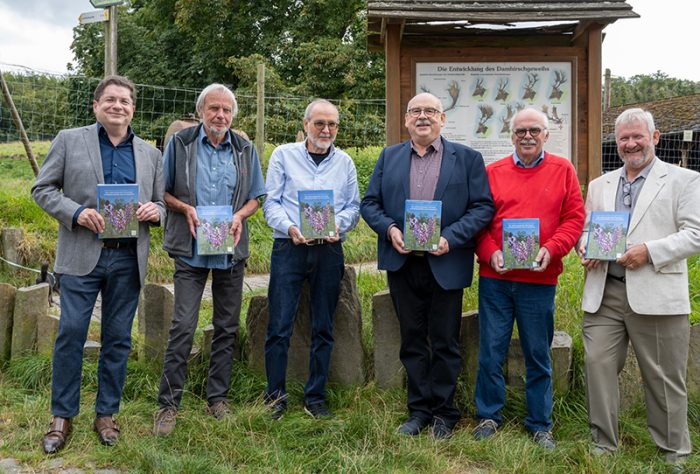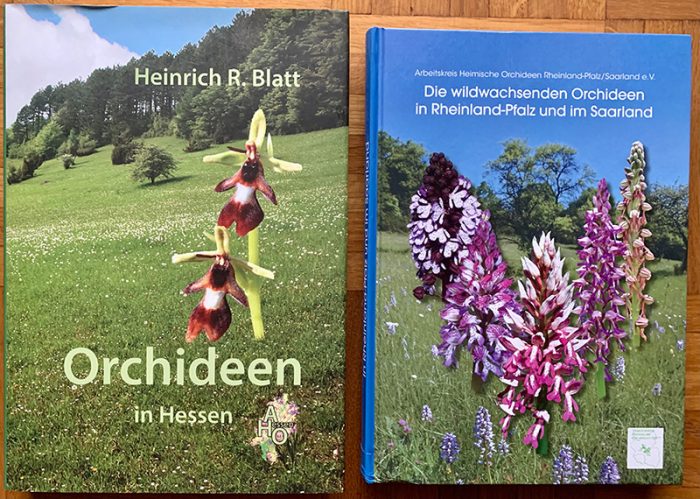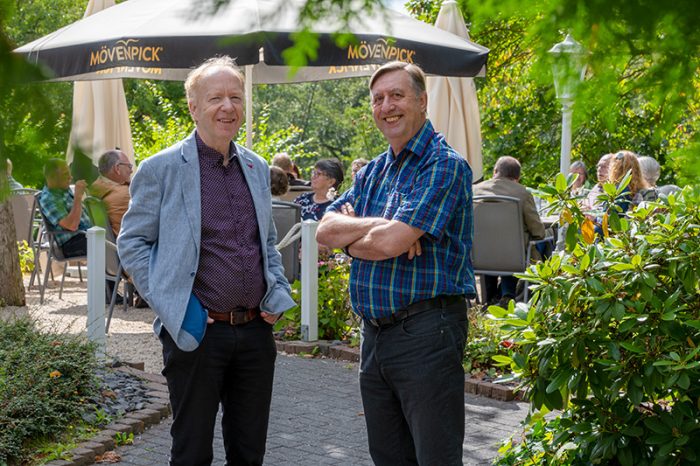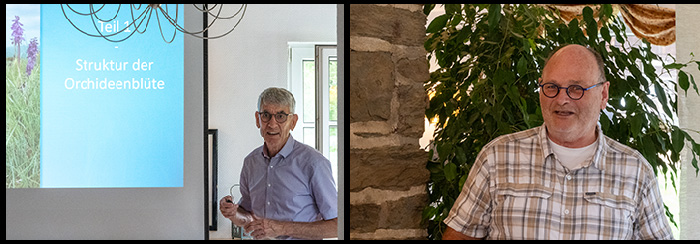One year after the publication of a new edition of “Orchideen in Hessen” by Heinrich Blatt, released by the Arbeitskreis Heimische Orchideen (AHO) Hessen, a first monograph about two German states in the neighborhood has been published: “Die wildwachsenden Orchideen in Rheinland-Pfalz und im Saarland“. In Coblence, six of the eight authors took part in the first presentation of the new book, honoring the 40-year-anniversary of AHO Rheinland-Pfalz/Saarland. Among them was the chairman of the AHO club, Juergen Passin (3. from right).
The book about Rhineland-Palatinate also shows several albiflora forms as Anacamptis morio, Anacamptis pyramidalis, Dactylorhiza incarnata, Dactylorhiza maculata, Dactylorhiza majalis, Gymnadenia conopsea, Orchis mascula, Orchis militaris and Orchis purpurea. The authors address those as varieties. It would be botanically more correct to name them as forms. There is also no taxonomic consistency – sometimes they are named var. albiflora, sometimes they are named var. alba. The hypochrome Ophrys forms of apifera and fuciflora are called var. flavescens, those of insectifera var. ochroleuca.
For me, it’s a bit odd that Dactylorhiza fuchsii is missing – those plants are subsumed among Dactylorhiza maculata agg. The authors are arguing that both taxa in Rhineland-Palatinate are “mixing”- while the populations in Saarland are following the “fuchsii type”. The book mostly shows photos shot in the Eifel region. There, the plants are tending to Dactylorhiza maculata with a distribution focus in Northwestern Europe. But further to the East, along the Rhine and in the Westerwald region there are also typical Dactylorhiza fuchsii.
The presentation of the book combined with a convention of AHO members was a good opportunity for professional discussions – here with Karel Kreutz (left) und Werner Hahn (right).
A witty lecture by the authors and photographers Jean Claessens und Jacques Kleinen was concluding the Day with a presentation of very detailled macro photos and the precise interaction of orchid flowers and pollinators.
presente



